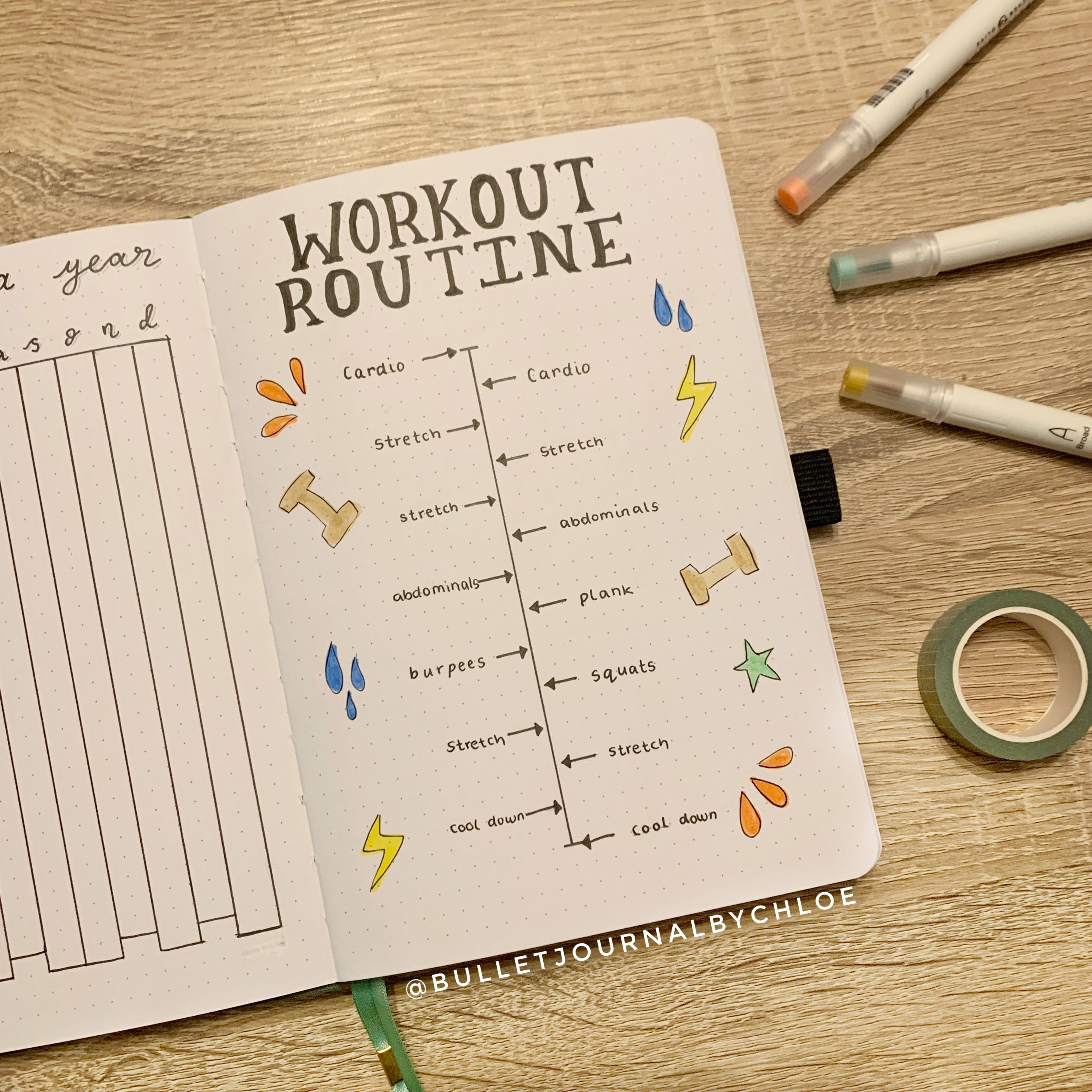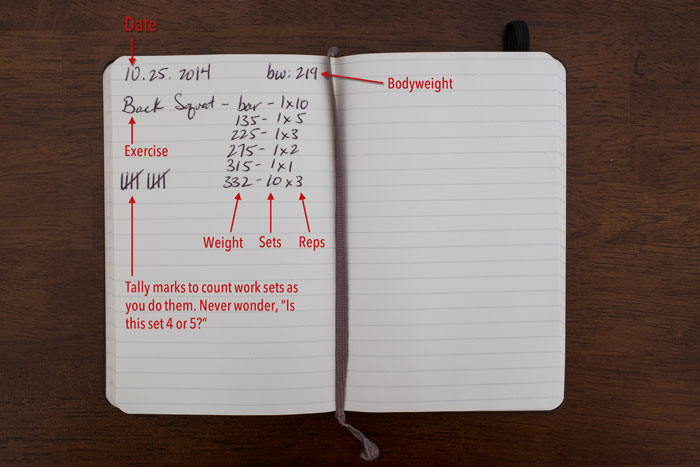Want to get fitter and stay motivated every day? Keeping a fitness journal could be the secret weapon you’re missing.
By writing down your workouts, meals, and progress, you’ll see what works and what doesn’t. This simple habit helps you stay focused, track improvements, and push through challenges. If you’re ready to take control of your fitness journey and make real changes, this guide will show you exactly how to create a fitness journal that fits your life and goals.
Let’s get started!

Credit: www.archerandolive.com
Benefits Of A Fitness Journal
Keeping a fitness journal brings many benefits. It helps you stay focused on your goals. Writing down workouts and meals makes your efforts clear. This small habit can change how you train and grow stronger.
A fitness journal keeps you motivated, tracks progress, and holds you accountable. These benefits make it easier to reach your fitness goals. Here is how each one helps you.
Motivation Booster
Seeing your daily efforts on paper can lift your spirits. It reminds you of your commitment. Even on tough days, reading past entries can inspire you. A fitness journal shows how far you have come. This keeps your energy high and your mind set on success.
Progress Tracking
Writing down workouts and results helps you notice improvements. You can track weight, reps, and time easily. This clear record shows what works best. It helps you avoid repeating mistakes. Tracking progress makes your fitness journey smarter and more effective.
Accountability Partner
A journal acts like a personal coach. It holds you responsible for your actions. Writing goals and daily activity creates a sense of duty. You feel less likely to skip workouts or cheat on meals. This keeps you honest and consistent with your plan.
Choosing The Right Journal Format
Choosing the right journal format is important for your fitness journey. The format affects how you track progress and stay motivated. Pick a format that fits your style and daily routine. It should be easy to use and help you review your workouts. This section explores popular journal formats and tools.
Digital Vs. Paper
Digital journals work well on phones and computers. They let you update entries anytime and anywhere. You can add photos, graphs, and reminders. Paper journals offer a hands-on feel. Writing by hand helps some people remember goals better. Paper journals don’t need batteries or apps. Both formats have strengths. Choose one that suits your habits.
Popular Apps And Tools
Many apps help track workouts and meals. Examples include MyFitnessPal, Strava, and Fitbit. These apps show progress with charts and daily summaries. Some apps sync with smartwatches and fitness bands. They send alerts to keep you on track. Apps also let you join communities for support. Test a few to find the best fit.
Customizable Templates
Templates simplify journaling by guiding your entries. They include sections for exercises, sets, and reps. Templates can track weight, calories, and mood. Digital templates allow easy editing and saving. Paper templates can be printed or bought as notebooks. Customizing templates keeps your journal relevant. Change templates as your fitness needs grow.
Essential Components To Include
A fitness journal helps track progress and stay motivated. It works best when it includes key parts. These parts give a clear picture of your fitness journey. They help you see what works and what needs change.
Workout Logs
Workout logs are the heart of any fitness journal. Write down exercises, sets, and reps each day. Note the weights used and the time spent. Tracking workouts shows your strength and endurance growth. It helps plan future workouts and avoid plateaus.
Nutrition Tracking
Nutrition tracking records what you eat every day. Note meals, snacks, and drinks with portion sizes. This helps link food habits to energy and body changes. It supports balanced eating and better diet choices. Tracking nutrition aids in reaching weight or muscle goals.
Goal Setting
Set clear and realistic fitness goals in your journal. Write short-term and long-term targets. Goals keep you focused and motivated during workouts. Review and adjust goals as you progress. Clear goals make your fitness journey purposeful and rewarding.
Mood And Energy Levels
Track your mood and energy before and after workouts. Note feelings like tired, strong, happy, or stressed. This helps find patterns between exercise and mental state. It guides changes to improve motivation and workout quality. Understanding mood boosts overall wellness and fitness success.
Setting Clear And Realistic Goals
Setting clear and realistic goals is key to making a fitness journal work well. Goals guide your efforts and keep you focused. Without clear targets, progress can feel slow or confusing. Realistic goals help you stay motivated and avoid frustration. They make your fitness journey easier and more rewarding.
Short-term Targets
Short-term targets break your big goals into smaller steps. These targets are usually set for days or weeks. They help you see quick progress and stay encouraged. Examples include walking 3,000 steps a day or doing 10 push-ups. Tracking these in your journal shows steady improvement.
Long-term Milestones
Long-term milestones mark important achievements in your fitness journey. These goals might take months or even years to reach. Examples include running a 5K or losing 20 pounds. Writing these milestones in your journal keeps your focus on the bigger picture.
Smart Goal Framework
The SMART goal framework makes goal setting clear and effective. SMART stands for Specific, Measurable, Achievable, Relevant, and Time-bound. Specific means you know exactly what to do. Measurable means you can track your progress. Achievable means the goal is possible. Relevant means it matters to your fitness journey. Time-bound means you set a deadline. Using SMART goals helps you stay organized and motivated.
Daily And Weekly Entry Tips
Keeping a fitness journal helps track your workouts and goals. Daily and weekly entries build a clear picture of your progress. They keep you focused and motivated. Writing regularly helps spot patterns and improve your routine.
Consistent Logging Habits
Write in your journal every day. Note exercises, sets, reps, and duration. Record how you feel before and after workouts. Use simple words to describe energy and mood. Stick to a set time to write. This makes journaling a habit.
Reflecting On Progress
Review your entries at the end of each week. Look for improvements in strength or endurance. Notice any struggles or missed workouts. Think about what worked well and what did not. Reflection helps you stay aware and focused on goals.
Adjusting Plans
Change your workouts based on your journal notes. Add more rest if feeling tired. Increase weight or reps if exercises become easy. Try new activities to keep things fresh. Adjusting plans keeps your routine effective and interesting.

Credit: livefit.com
Using Data To Improve Workouts
Using data to improve workouts helps you train smarter. A fitness journal collects important details about each session. This data shows what works and what needs change. Tracking progress with numbers makes your efforts clear. It guides you to better results and fewer injuries.
Identifying Patterns
Look at your journal to find patterns in your workouts. Notice days when you feel strong or tired. See which exercises cause pain or bring gains. Patterns show what helps your body grow and stay safe. Use this knowledge to plan better sessions each week.
Tracking Strength Gains
Record weights, reps, and sets for each exercise. Watch how these numbers change over time. Growing strength means lifting heavier or more reps. Tracking gains keeps you motivated and on track. It proves your hard work leads to real progress.
Adjusting Intensity And Volume
Use your data to change workout difficulty and amount. Increase intensity by adding weight or speed. Adjust volume by changing reps, sets, or rest time. Data helps balance hard work and recovery. This prevents burnout and helps steady improvement.
Incorporating Rest And Recovery Notes
Incorporating rest and recovery notes in your fitness journal helps improve your workouts. Rest allows your muscles to heal and grow stronger. Recovery keeps you from getting injured and tired. Writing down these details makes your fitness plan smarter and safer. Tracking how you rest gives you clues about your body’s needs. It also shows progress beyond just exercise.
Sleep Tracking
Sleep is vital for fitness and health. Record your sleep hours every night. Note how well you slept and if you woke up often. Good sleep improves energy and muscle repair. Poor sleep can slow down progress and raise injury risks. Sleep tracking helps find patterns affecting your workouts.
Injury And Pain Logs
Write down any pain or injuries you feel. Note where and when it hurts. Mention what exercises caused discomfort. Tracking pain helps spot issues early. It prevents small problems from becoming serious. Pain logs guide you to adjust your routine safely.
Recovery Strategies
List methods you use to recover after workouts. Include stretching, foam rolling, or massage details. Track the use of ice or heat treatments. Note rest days and light activity days. Recovery strategies help your body heal faster. Writing them down shows which methods work best.
Creative Ideas To Personalize Your Journal
Personalizing your fitness journal makes tracking progress fun and motivating. It turns a simple notebook into a powerful tool. Your journal reflects your unique fitness journey. This motivates you to keep going every day.
Try creative ideas that fit your style. Small touches make a big difference. Your journal becomes a place to celebrate wins and plan goals.
Incorporating Photos And Measurements
Adding photos shows your body changes over time. Take pictures weekly or monthly. Place them next to your workout notes. It helps you see real progress beyond numbers.
Record body measurements like waist, hips, and arms. Write them clearly with dates. This tracks changes you might not feel daily. Seeing these details keeps you motivated to continue.
Motivational Quotes
Write short, inspiring quotes in your journal. Choose words that lift your spirit and push you forward. Place them at the top of pages or near goals. They act as daily reminders to stay strong.
Change quotes often to keep your energy fresh. Simple phrases like “Keep going” or “You are strong” work well. These small boosts help maintain focus and drive.
Reward Systems
Create a reward plan for reaching milestones. List small treats for meeting weekly or monthly goals. This might be a favorite snack, a movie night, or new workout gear.
Mark rewards clearly in your journal. Checking off goals and rewards feels great. It builds positive habits and encourages steady progress.
Common Mistakes To Avoid
Keeping a fitness journal helps track progress and stay motivated. Many people make mistakes that reduce its effectiveness. Avoiding these common errors improves your fitness journey and results.
Inconsistent Entries
Skipping journal entries makes it hard to see progress. Write daily or after each workout. Consistency helps spot patterns and areas needing change. Missing days means missing valuable data about your habits.
Unrealistic Goal Setting
Setting goals too high causes frustration and burnout. Choose small, clear goals that you can reach. Realistic goals keep motivation high and build confidence. Adjust goals as you improve to stay challenged but not overwhelmed.
Ignoring Rest Days
Rest days are part of fitness success. Ignoring rest leads to injury and fatigue. Record rest days in your journal to balance effort and recovery. Rest helps muscles grow and prevents burnout, keeping progress steady.

Credit: jamesclear.com
Frequently Asked Questions
What Is The Purpose Of A Fitness Journal?
A fitness journal tracks workouts, progress, and goals. It helps maintain motivation and identify improvements. Journals improve consistency and accountability. They also provide insight into workout effectiveness and areas for adjustment.
How Do I Start A Fitness Journal Effectively?
Begin by choosing a format: digital or paper. Record daily exercises, sets, reps, and duration. Note nutrition and energy levels. Set clear, realistic goals. Review entries weekly to track progress and adjust plans.
What Key Details Should A Fitness Journal Include?
Include exercise type, duration, intensity, and repetitions. Track weight, measurements, and body changes. Note mood, energy, and sleep quality. Record goals and achievements. These details help evaluate performance and health improvements.
How Often Should I Update My Fitness Journal?
Update your fitness journal after every workout. Consistency ensures accurate progress tracking. Daily entries help identify patterns and stay motivated. Regular updates enhance accountability and goal achievement.
Conclusion
Creating a fitness journal helps track your progress clearly. Write down your workouts, meals, and feelings each day. This keeps you focused and motivated to stay active. Small steps add up to big changes over time. You can see what works and what needs change.
Stay patient and consistent with your journal. It becomes a helpful tool on your fitness path. Start today, and watch your efforts grow stronger. Your journal is your personal guide to better health.
